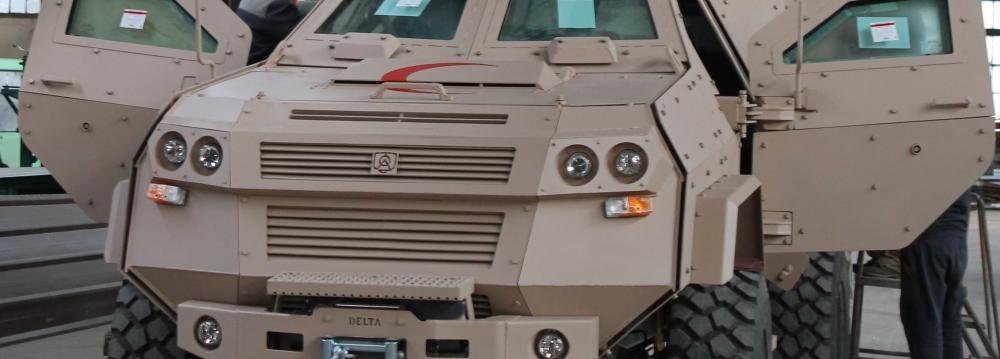Worldwide arms trade has risen to its highest level since the Cold War in the last five years, driven by a demand from the Middle East and Asia, a study said Monday.
Between 2012-2016, arms imports in terms of volume by countries in Asia and Oceania accounted for 43% of global imports, a 7.7% rise compared to the previous 2007-2011 period, according to the Stockholm International Peace Research Institute, World Bulletin reported.
"Transfer of major weapons in 2012-16 reached their highest volume for any five-year period since the end of the Cold War," the independent institute said in a statement.
The share of Asia and Oceania in international imports was slightly higher (44%) between 2007 and 2011.
Share of countries in the Middle East and the (Persian) Gulf monarchies jumped from 17% to 29%, far ahead of Europe (11%, down seven points), the Americas (8.6%, down 2.4 percentage points) and Africa (8.1%, down 1.3 points).
"Over the past five years, most states in the Middle East have turned primarily to the USA and Europe in their accelerated pursuit of advanced military capabilities", said Pieter Wezeman, senior researcher with the SIPRI Arms and Military Expenditure Program.
"Despite low oil prices, countries in the region continued to order more weapons in 2016, perceiving them as crucial tools for dealing with conflicts and regional tensions," he added.
Record Sales
Sipri said worldwide arms imports and exports over the last five years have reached a record level since 1950.
Saudi Arabia was the second largest importer of weapons in the world (up 212%), behind India, which unlike China, does not have a production at national level yet. Qatar's imports were also up 245%.
The United States remains the top weapons exporter with a 33% market share (up 3 point), ahead of Russia (23%, down 1 point), China (6.2%, up 2.4 points) and France (6%, down 0.9 points) passing Germany (5.6%, down 3.8 points).
These five countries account for almost 75% of global exports of heavy weapons.
France's boost in the export ranking is a result of important contracts signed with Egypt, which acquired Mistral-style warships and Rafale combat aircraft.
The United States and France are the main weapons providers for the Middle East while Russia and China are the main exporters to Asia.
The US’s main three customers were Saudi Arabia, the United Arab Emirates and Turkey. Saudi Arabia was particularly a lucrative market for the UK, which sold almost half of its total weapons to the monarchy.
“The USA supplies major arms to at least 100 countries around the world—significantly more than any other supplier state,” said Aude Fleurant, director of the Sipri’s arms and military expenditure program. “Both advanced strike aircraft with cruise missiles and other precision-guided munitions and the latest generation air and missile defense systems account for a significant share of US arms exports.”
Oil Wealth
Rising oil wealth had made it possible for Middle Eastern countries to ramp up their military spending—but that's not expected to last.
"Because weapons contracts take a very long time to complete, we are now seeing deliveries that were agreed years ago, when the oil price was high," Fleurant said.
She said the recent crash in oil prices will inevitably lead to a decline in arms trade in the region.
Imports by countries in Southeast Asia have also increased over the past five years, fueled by contentious territorial disputes in the South China Sea.
The area is home to crucial shipping lanes, and it's rich in oil and gas reserves. China, Taiwan, Vietnam, the Philippines, Malaysia and Brunei have all made territorial claims over islands in the area.
Tensions have grown since 2014 as China has turned sandbars into islands, equipping them with airfields, ports and weapons systems and warned US warships and aircraft to stay away from them.
SIPRI said most of the weapons acquired by the countries in the area, including frigates, submarines, support ships, combat aircraft and anti-ship weapons, have a maritime role.


